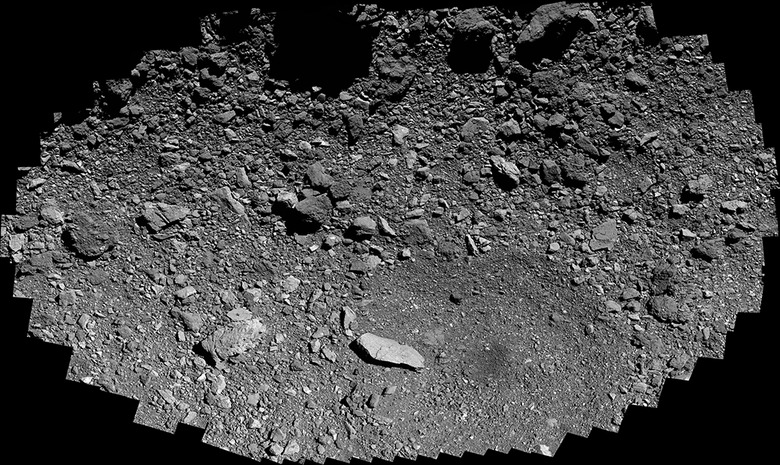NASA Gets Up Close And Personal With Space Rock Bennu
- NASA's asteroid sampling OSIRIS-REx probe took a dive toward one of its sample collection sites and sent back a gorgeous image.
- The site is called Osprey, and it's a backup for the probe if the primary site, Nightingale, doesn't work out.
- The probe will carry out its sampling maneuver in August.
NASA's OSIRIS-REx asteroid probe has already done a lot of work in a very short amount of time. After originally arriving at the space rock known as Bennu way back in 2018, it successfully entered its orbit and began scanning its surface for interesting sights. The asteroid's surface proved to be littered with more debris than NASA had anticipated, so finding a nice smooth spot to touch down posed a huge challenge.
The plan all along has been for the probe to dive close to the asteroid and collect a sample of its surface material for study back on Earth. Deciding on a location took some time, and NASA had multiple would-be sample-collection sites mapped out before coming to a final decision. Now, we have a glorious look at once of the backup collection sites.
As NASA explains, OSIRIS-REx performed a very close pass of the collection site known as Osprey in late May. It lowered itself to within 250 meters of the asteroid's dusty surface, which is hazardous in and of itself, but it was crucial to ensuring the mission is an eventual success.
The team has already selected the sample site called Nightingale as the primary collection spot, but it's important to have a backup plan. Osprey is that backup plan, and the OSIRIS-REx team needed a nice clear map of the area in the event that they'd have to resort to collecting a sample from Osprey instead of Nightingale.
The actual sample-collection maneuver is as delicate as you can possibly imagine. The spacecraft will have to lower itself to within a literal arm's reach of the surface, extend its robotic limb, and snatch a sample before returning to a higher orbit. The probe will ensure it collected enough material before departing and then, if everything looks in order, it will push itself out of Bennu's orbit and begin the long journey home.
The probe won't be attempting the sample gathering maneuver until August, but it's been getting some practice in the meantime. In April, NASA's team sent the spacecraft on a brief dive toward the asteroid before turning it back around. It's a bit like a practice swing, and it allows the probe's handlers to get a better idea of how OSIRIS-REx will respond during the eventual real-world maneuver.
Because of the distance between the asteroid and Earth, real-time control of the probe is out of the question. Instead, the scientists have to tell the probe to carry out a command and then hope that nothing goes wrong. It's this simple fact that makes practicing maneuvers ahead of time so vitally important.
